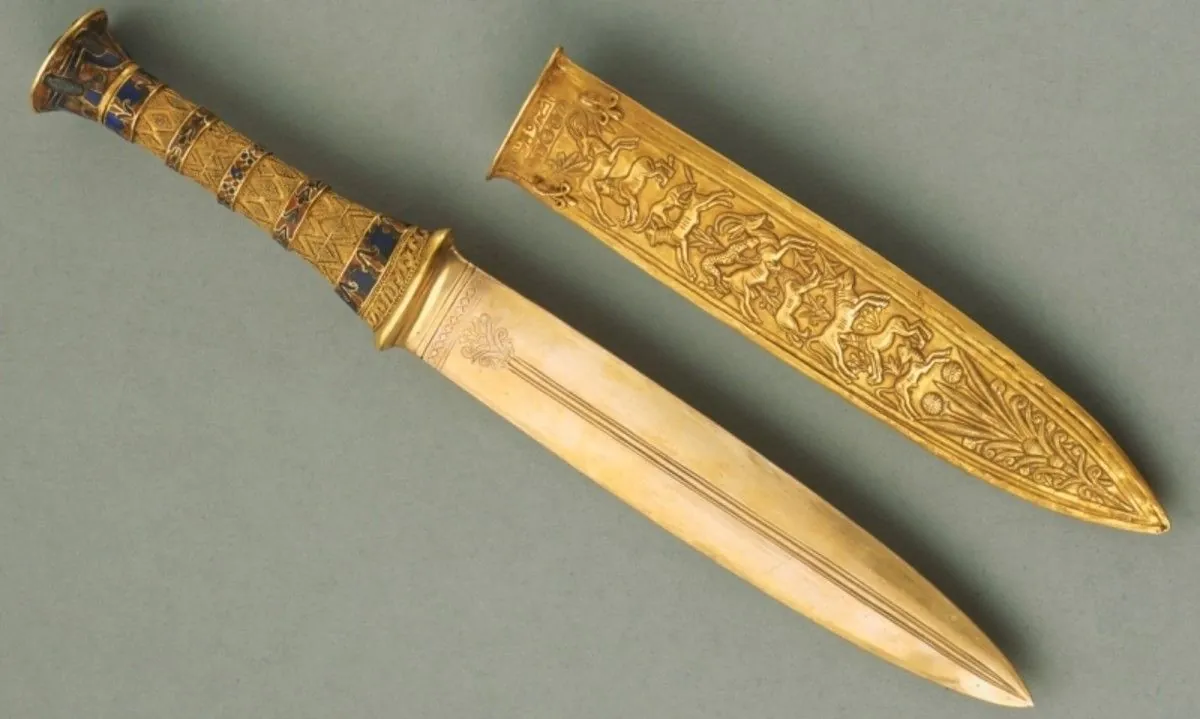In a remarkable archaeological discovery, a bronze sword dating back over 3,000 years has been unearthed in the Nile Delta region of Egypt. The weapon, bearing the insignia of Ramses II, one of ancient Egypt's most powerful pharaohs, was found among a trove of artifacts at the Tell Al-Abqain fort, located approximately 48 kilometers southeast of Alexandria.
The sword, which has retained its reflective sheen despite millennia underground, features an ornamental cartouche - a royal emblem used by pharaohs. This discovery provides a unique glimpse into the military prowess and daily life of ancient Egyptian soldiers during the New Kingdom period, which spanned from the 16th to the 11th century BCE.
Ramses II, also known as Ramesses the Great, ruled from 1279 to 1213 BCE, marking the zenith of Egypt's military might. His reign was characterized by extensive construction projects and territorial expansion, particularly into the Levant region. Some scholars associate Ramses II with the pharaoh mentioned in the Book of Exodus, though this remains a subject of debate.
The excavation at Tell Al-Abqain has yielded a wealth of artifacts beyond the sword. Archaeologists uncovered everyday items such as ovens for food preparation, an ivory kohl applicator, and ceremonial scarab beetles. These findings offer valuable insights into the daily routines and rituals of ancient Egyptian soldiers.
The fort's layout reveals a series of mud-brick structures, including military barracks and weapons storage areas. This organized arrangement aligns with the standardized architecture typical of state-managed facilities in ancient Egypt. The site's location and purpose underscore its significance in defending Egypt's northwestern frontiers during the New Kingdom era, a period renowned for its political stability and monumental architecture.
"It's a very striking and a truly remarkable find. For an object to bear the cartouches of Rameses II would suggest to me that it belonged to someone of relatively high rank."
The discovery of this sword in a functional setting, rather than a tomb, adds to its historical value. It suggests that the weapon may have belonged to a high-ranking official or soldier, serving as a symbol of status and prestige.
The Tell Al-Abqain fort was part of a larger defensive network guarding against incursions from Libyan tribes and the enigmatic "sea peoples" - a group of seafaring raiders who posed a significant threat in the eastern Mediterranean during the late Bronze Age. This defensive strategy highlights the complex geopolitical landscape of the time and Egypt's efforts to secure its borders.
As excavations continue, these findings contribute to our understanding of ancient Egyptian military organization, technological capabilities, and the intricate relationship between state power and border defense during one of the most fascinating periods in the civilization's history.
